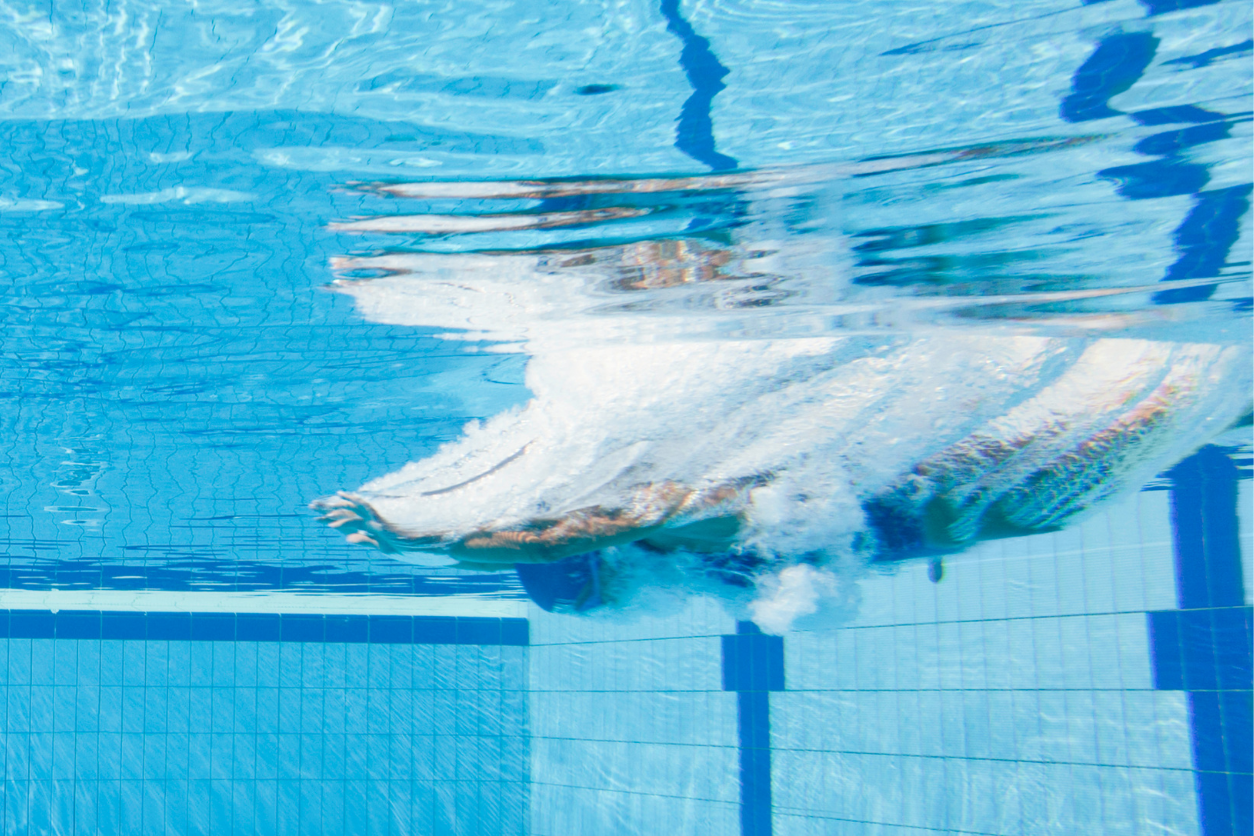Campus size may vary, but ultimately the pool is the same size everywhere.
If you’ve completed as a swimmer at the high school or club level, it’s only natural that you’ll want to compete on the biggest stage (or pool) in college, too. But the reality of that is only the elite few make Division I rosters and even fewer earn full scholarships. However, if you’re not among the top 3% of swimmers who compete at the Division I level, you can still make a big splash at a smaller school. Plus, you might find those small schools offer a bigger array of opportunities, as well.
Division III
With 274 men’s swimming programs and 244 women’s teams, NCAA Division III schools offer more opportunities to swim at the collegiate level than either Division I or Division II. And, unlike at higher levels, swimming on a DIII team likely won’t mean a full-time commitment. That means you’ll also have more time to study, enjoy campus life, and maybe even compete in another sport.
The one catch to swimming at a Division III school is that DIII schools don’t offer athletic scholarships. However, most DIII schools do offer plenty of academic scholarship money. In addition, if you do need financial aid to swim in college, academic scholarships in DIII may actually cover more of your college expenses than partial athletic scholarships at DI or DII schools. Though the available academic scholarship money may vary from school to school, it’s only available if you qualify. So make sure your grades and entrance exam scores are as high as possible.
NAIA
Size-wise, NAIA schools are comparable to NCAA Division III schools. While there are notably fewer NAIA swim programs compared to DIII, the big difference is the 39 men’s teams and 44 women’s programs have eight scholarships per team to award, but average rosters of 12 swimmers. While that likely means a partial athletic scholarship at best, like DIII schools, NAIA institutions also have plenty of academic scholarship money available. Combine the two and it could provide a more affordable option to attend college and swim competitively. Just remember that not all NAIA swim programs are fully funded, so some schools may have fewer equivalent scholarships to award.
In addition, like DIII, NAIA schools generally have smaller campuses and fewer students. That can translate into smaller classes with more opportunities to interact, greater social opportunities to know more of your fellow students, and the chance for coaches, professors, and administrators to invest in you. Finally, while NAIA swim teams often do compete against DII and DIII schools, the better balance between athletics and academics means you’ll also have more time to enjoy simply being a college student.
NJCAA and CCCAA
Combined, the National Junior College Athletic Association (NJCAA) and California Community College Athletic Association (CCCAA) offer 64 men’s swimming programs and 70 women’s swim teams. While there are significantly fewer NJCAA programs, the big advantage one of their member schools offers is the availability of 15 full-ride scholarships per team. When you consider that most JUCOs only carry 9 or 10 athletes on the swim team, and your odds of landing a full-ride swim scholarship are pretty good.
While for many, a two-year junior college is considered less ideal than a four-year school, remember that swimming for a JUCO will most likely give you the opportunity to compete as soon as you hit campus. And that will give you time to grow, improve your form, and get a feel for college athletics and academics. Plus you gain more experience, earn an AA degree, and since most junior colleges are more affordable than four-year schools, you can save money too.
As a swimmer, you can make a big splash at a small school. Plus, with the opportunity to enjoy a better balance between academics and athletics, while still earning an athletic or academic scholarship (or both), swimming at a small college can pay off big.
Did you enjoy the article ‘Can You Make A Big Splash Swimming At A Small College?’? If so, check out more of our articles HERE.




